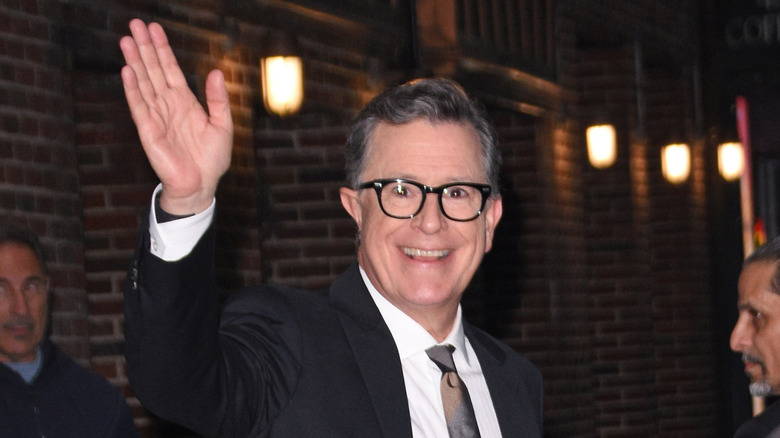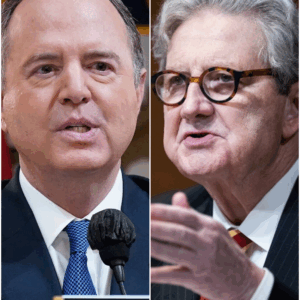THE TRUTH JUST WENT ROGUE: MADDOW, COLBERT, AND REID LAUNCH A NEWSROOM THAT ANSWERS TO NO ONE
It didn’t arrive with a press tour or a flashy corporate campaign. There were no glossy profiles, no leaked memos to the trades. It slipped quietly into the bloodstream of cable news—a whisper at first—and then detonated into a national shockwave.
Rachel Maddow, Stephen Colbert, and Joy Reid have done the unthinkable: launched an independent newsroom that rejects every convention of the broadcast media system that made them household names.
Their mission statement is deceptively simple: honest reporting, satire with purpose, investigations no one else will touch, and a direct relationship with viewers—not shareholders.
A BREAK FROM THE MACHINE
For decades, American cable news has run like a precision instrument—efficient, predictable, and thoroughly commercialized. Every segment follows a formula. Every “debate” is calibrated for engagement. Even networks that claim to be liberal, progressive, or independent remain tethered to the same structural incentives: ad revenue, corporate boards, and ratings algorithms that reward outrage more than insight.
Maddow’s new venture, however, rejects that architecture entirely. It’s not a network—it’s a declaration.
The newsroom she and her colleagues have built operates without hierarchy or bureaucracy. Editorial decisions are made collectively, guided by public interest rather than profit forecasts. It’s an experiment in journalistic democracy—one where the goal isn’t control, but clarity.
The first broadcast went live with almost no promotion. Within hours, clips spread across social media like wildfire. Maddow’s signature depth of analysis anchored an exposé on political influence in federal contracting—an investigation so detailed that it immediately trended across multiple platforms.
Colbert brought humor to the table, but not as distraction. His investigative satire dissected the hidden world of corporate lobbying with surgical precision. Reid, meanwhile, turned the spotlight toward communities long ignored by mainstream media, weaving stories of inequality, resilience, and systemic failure into the larger national narrative.
A NEW MODEL OF MEDIA FREEDOM
What makes this newsroom revolutionary isn’t just its star power—it’s its structure.
There are no executives. No creative directors whispering about optics. No “content strategy teams” studying engagement metrics before deciding what’s worth airing.
Decisions are made by the journalists themselves. Each story is debated, challenged, and approved through consensus. Legal advisors are there to protect, not restrict.
This liberation from corporate oversight has already transformed their work. Investigative reporters can pursue leads without waiting for permission. Producers no longer edit stories to avoid offending sponsors. And for the first time in their careers, Maddow, Colbert, and Reid are free to ask—and answer—questions that once made executives nervous.
The audience noticed.
Within the first week, engagement across streaming platforms shattered expectations. Viewers flooded comment sections not with outrage, but with gratitude. After years of performative “balance,” here was something rare: reporting that felt both intelligent and sincere.

THE CRITICS AND THE COUNTERARGUMENT
Predictably, the backlash came fast.
Skeptics warned that a newsroom without rigid oversight risks drifting into bias or sensationalism. Others questioned whether a self-governing media collective could maintain consistency or discipline.
But so far, the results speak for themselves. Every report is sourced, cited, and reviewed by a rotating panel of peers. The newsroom’s fact-checking protocols rival those of legacy institutions. And unlike corporate outlets that hide corrections behind paywalls, their transparency is public, immediate, and unapologetic.
Colbert’s first major segment—a deep dive into how lobbying networks shape congressional policy—was a case in point. His trademark humor was still there, but it served a higher function: to clarify, not distract. Behind every punchline was evidence, documents, and follow-up interviews.
Reid’s coverage of environmental injustice in southern communities drew critical praise from media watchdogs. Her storytelling was passionate, but grounded in data—a balance that traditional networks often fail to achieve.
And Maddow, the project’s intellectual center, continues to do what she does best: connect dots others overlook. Her reporting on private equity’s influence in political fundraising has already prompted congressional inquiries.
OWNED BY THE PEOPLE, NOT THE BRANDS
Perhaps the boldest element of this newsroom is its funding model. There are no advertisers, no corporate sponsors, no clickbait incentives. Instead, it operates on a hybrid of micro-donations, memberships, and open-access crowdfunding.
Maddow has been clear about the philosophy:
“We work for you, not a boardroom. Your engagement fuels us. Your questions guide us. Your trust is earned, not bought.”
By flipping the traditional relationship between journalists and audiences, the trio has built something more than a show—it’s a partnership.
Their analytics are not used to manipulate or monetize viewers, but to understand what stories matter most. Live Q&A sessions invite public participation in real time, blurring the line between reporter and citizen. Audience tips have already led to multiple on-air investigations.
In a media culture obsessed with performance metrics, this emphasis on trust feels radical.
A HUMAN OPERATION IN A DIGITAL WORLD
Despite its technological sophistication, the project remains grounded in humanity. Each host brings a distinct energy: Maddow’s forensic analysis, Colbert’s moral wit, Reid’s empathy and edge. But they operate as collaborators, not competitors.
Internal critique is built into the workflow. Stories are debated openly. Scripts are rewritten collectively. It’s messy, but purposeful—a constant exercise in accountability.
The approach has already attracted veteran reporters disillusioned by corporate media. Many have quietly resigned from traditional networks to join Maddow’s operation. Several Pulitzer-winning journalists have reportedly signed on as contributors.
One insider described the energy as “equal parts newsroom and revival tent.”
THE RIPPLE EFFECT
The impact has been immediate.
Traditional networks, once confident in their dominance, are now scrambling to adapt. Producers are experimenting with unscripted formats and audience transparency to emulate the authenticity that Maddow and her team have reclaimed.
Industry analysts are calling this “the authenticity correction”—a market response to decades of overproduced television journalism.
More importantly, the project has reignited a national debate about what news should be. Conversations about media ethics, accountability, and truth-telling now dominate talk shows and opinion columns.
Maddow’s newsroom has become not just a platform, but a catalyst—a mirror forcing both journalists and audiences to reconsider what integrity looks like in an age of spin.
THE ROAD AHEAD
The path forward is uncertain, and the stakes are enormous. Maintaining independence while sustaining operations will test both vision and pragmatism. Investigative journalism is expensive, time-consuming, and politically perilous.
But if early indicators hold, this model might be more than sustainable—it might be transformative.
In its first month, the newsroom’s subscriber base outpaced projections by 240 percent. Universities have already requested partnerships for journalism programs. Civil rights organizations are collaborating on story development.
The experiment has momentum—and meaning.
THE RETURN OF COURAGE
At its heart, this project isn’t about rebellion. It’s about reclamation.
In an era of algorithmic outrage and corporate gatekeeping, Maddow, Colbert, and Reid are rebuilding journalism from the ground up: transparent, fearless, human.
They call their guiding principle “No bosses. No scripts. Just truth.”
And for millions of disillusioned viewers, that phrase has become more than a slogan—it’s a lifeline.
The rogue newsroom has arrived. Its impact is spreading. And whether the establishment admits it or not, the future of American journalism may have just shifted forever.
Because this time, the truth doesn’t work for anyone—it works for everyone.
News
The auditorium glitched into silence the moment Joel Osteen leaned toward the mic and delivered a line no pastor is supposed to say in public. Even the stage lights seemed to hesitate as his voice echoed out: “God will NEVER forgive you.” People froze mid-applause. Kid Rock’s head snapped up. And in that weird, suspended moment, the crowd realized something had just detonated off-script.
The crowd expected an inspiring evening of testimony, music, and conversation. What they got instead was one of the most explosive on-stage confrontations ever witnessed inside a church auditorium. It happened fast—36 seconds, to be exact.But those 36 seconds would…
The room stalled mid-breath the moment Mike Johnson snapped open a black folder that wasn’t on any official docket. Cameras zoomed. Staffers froze. The label on the cover — CLINTON: THE SERVER SAGA — hit like a siren. Johnson leaned toward the mic, voice sharpened enough to scratch glass, and read a line that made every timeline jolt: “Her email is criminal.”
Here’s the thing about made-for-TV government: it knows exactly when to hold a beat. Tuesday’s oversight hearing had the rhythm down cold—routine questioning, polite skirmishes, staffers passing notes like we’re all pretending this is not a stage. And then Mike…
🔥 “THE FLOOR SHOOK BEFORE ANYONE COULD SPEAK.” — Investigator Dane Bonaro didn’t walk into the chamber — he tore through it, slamming a blood-red binder onto the desk with a force that made the microphones hiss. The label on the cover froze the room mid-breath: “1.4 MILLION SHADOW BALLOTS.” He locked eyes with the council and snarled, “You want the truth? Start with this.” For one suspended second, every camera operator lifted their lens like they’d just smelled a political explosion.
Here’s a scene you’ve watched a hundred times if you’ve spent enough hours in hearing rooms and greenrooms: a witness with a flair for performance, a committee hungry for a moment, and a gallery of reporters quietly betting which line…
🔥 “THE SMILE FLICKERED—AND THE ENTIRE STUDIO FELT IT.” — Laura Jarrett walked onto the Saturday TODAY set with the kind of calm, polished glow producers dream of. Cameras glided, lights warmed, and the energy felt like a coronation. But right as she settled between Peter Alexander and Joe Fryer, something shifted — a tiny hesitation in her smile, the kind that makes everyone watching sit up a little straighter. And then it came: a voice from outside the studio, sharp enough to snap the broadcast in half. For a full second, no one moved.
Here’s the thing about TV milestones: they’re designed for easy applause. A new co-anchor takes the desk, the chyron beams, the studio lights do their soft-shoe, and everyone is on their best behavior. It’s a ritual as old as morning-show…
🔥 “THE ROOM STOPPED LIKE SOMEONE CUT THE OXYGEN.” — What’s racing across timelines right now isn’t framed as a speech, or an interview, or even a moment. It’s being told like a rupture — the instant Erika Kirk, normally armored in composure, let a single tear fall while standing beside Elon Musk. Witnesses in these viral retellings swear the tear didn’t look emotional… it looked inevitable, like something finally broke through her defenses. And when Musk turned toward her, the entire audience leaned in as if they already knew the world was about to shift.
It was billed as a calm forum on human rights—an hour for big ideas like freedom, transparency, and the obligations that come with having a public voice. The stage was washed in soft gold, the kind of lighting that flatters…
🔥 “THE ROOM WENT DEAD IN UNDER A SECOND.” — What unfolded inside the Senate chamber didn’t look like a hearing anymore — it looked like a trap snapping shut. Adam Schiff sat back with that confident half-smile, clutching a 2021 DOJ memo like it was the final move in a game he thought he’d already won. Staffers say he timed his line perfectly — “Your rhetoric ignores the facts, Senator. Time to face reality.” But instead of rattling Kennedy, something in the senator’s expression made even reporters lean forward, sensing the shift before anyone spoke again.
It didn’t look like much at first—another oversight hearing, another afternoon in a Senate chamber where the oxygen gets thinned out by procedure. Then Adam Schiff leaned into a microphone with a lawyer’s confidence, and John Neely Kennedy pulled out…
End of content
No more pages to load














